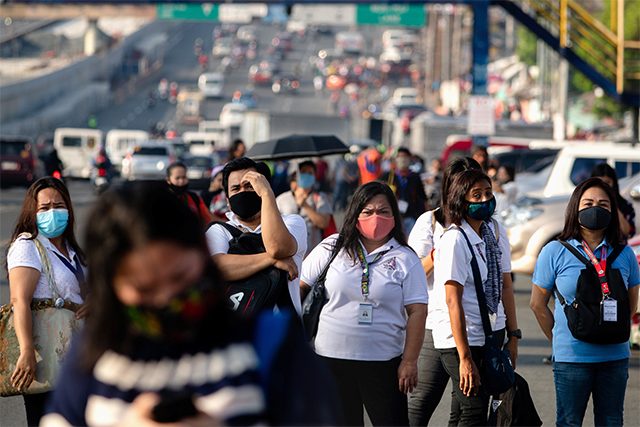
MANILA — Millions of people returned to work in the Philippine capital on Monday as one of the world’s strictest and longest coronavirus lockdowns was eased to help resuscitate an economy that has been battered by the closure.
Public transport such as trains and shuttle buses were allowed to operate in Metro Manila but on a limited scale, forcing commuters to wait in long queues for hours, and leaving hundreds of workers stranded.
“I have to go back to work,” said Steven John Cabusao, who walked several kilometres on his first day of work after being confined to his home for 11 weeks.
Cabusao, 24, who works as a maintenance planner at an aviation firm, said his need to earn a living outweighed his fear of the coronavirus. “The fear of contracting the virus will always be there.”
With the third highest number of coronavirus cases and second highest official death toll in Southeast Asia, the Philippines also allowed the reopening of more businesses, and people can now leave home without government permits.
Manila’s measures were among the world’s toughest, on par with those of the Chinese city of Wuhan, where the coronavirus outbreak first emerged, and stricter than curbs at the peak of the contagion in Italy and in Spain, bringing the economy to a sudden halt.
In easing the measures, Philippine President Rodrigo Duterte sought to walk the fine line between protecting the country’s over 107 million people from COVID-19 while reviving the economic facing its biggest contraction in more than three decades.
“This is his biggest gamble yet because whatever happens, it’s on him,” University of Santo Tomas Political Science Professor Dennis Coronacion told ABS-CBN News.
The decision to ease measures came after the country saw a spike in the number of coronavirus cases it reports daily, which health officials attribute to increased testing and clearing of a backlog of tests.
The Philippines has recorded a total 18,086 infections recorded, of which 957 led to deaths.
Presidential spokesman Harry Roque said the country’s positivity rate, or proportion of tests that come back positive, had been more than halved to 6.5% as of late May from 13.4% in April, suggesting the country was on its way to managing the pandemic.
Health officials also said the lockdown had slowed the growth in coronavirus transmissions in the country from three to four people being infected by one other person to one.
But Dr. Jose Santiago, President of the Philippine Medical Association, said the key to a successful transition to the so-called new normal is implementation.
“As you know, the implementation (of relaxed rules) is very challenging. I don’t know if they can really implement the social distancing and compulsory wearing of masks”. —Reporting by Eloisa Lopez and Neil Jerome Morales; Additional Reporting by Adrian Portugal and Martin Petty; Editing by Raju Gopalakrishnan









